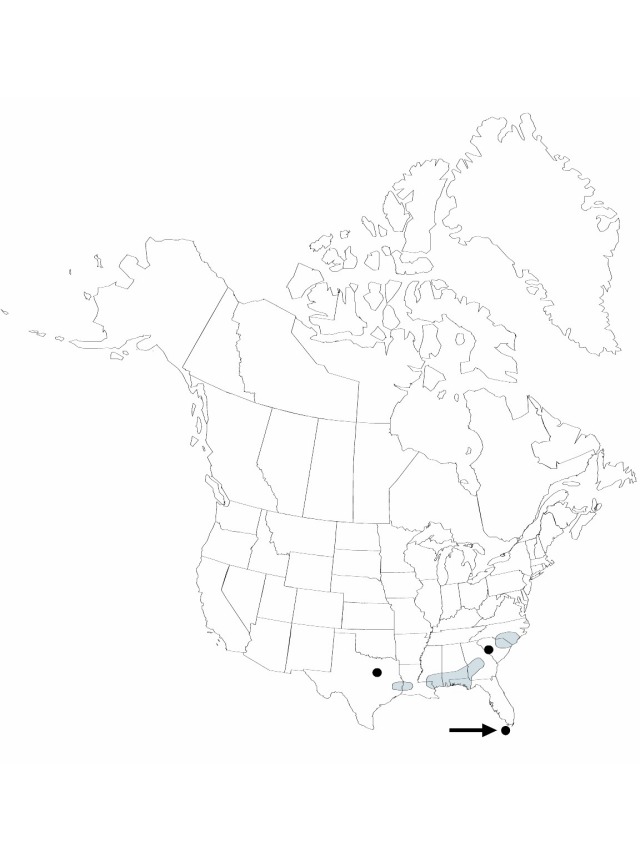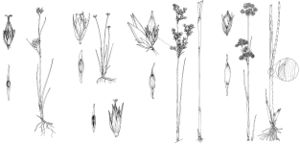Juncus trigonocarpus
Syn. Pl. Glumac. 2: 308. 1855.
Herbs, perennial, cespitose, 5–10 dm. Culms erect, 2–5 mm diam., smooth. Cataphylls 1–2, straw-colored, apex rounded. Leaves: basal 0–1, cauline 2–3; auricles 0.2–0.4 mm, apex obtuse, leathery; blade terete, 2.5–22 cm × 1.3–4 mm, smooth. Inflorescences panicles of 30–100 heads, 3–9 cm, stiffly erect or ascending branches; primary bract erect; heads 2–8-flowered, obconic, 4–8 mm diam. Flowers: tepals green to reddish brown, lanceolate; outer tepals 2.5–2.8 mm, acuminate; inner tepals 2.8–3.5 mm, acute; stamens 3–6, anthers 1/2 filament length. Capsules exserted, chestnut brown, 3-locular, ovoid-pyramidal, 4–5 mm, apex acuminate, valves separating at dehiscence.. Seeds fusiform, 1.8–2.6 mm, tailed; body covered with whitish. translucent veil.
Phenology: Fruiting early fall–early winter (fruit often persisting until spring).
Habitat: Wet pinewoods, pine barrens, bogs, hammocks, roadsides, and seepy areas
Elevation: 0–200 m
Distribution

Ala., Fla., Ga., La., Miss., N.C., S.C., Tex.
Discussion
Selected References
None.
